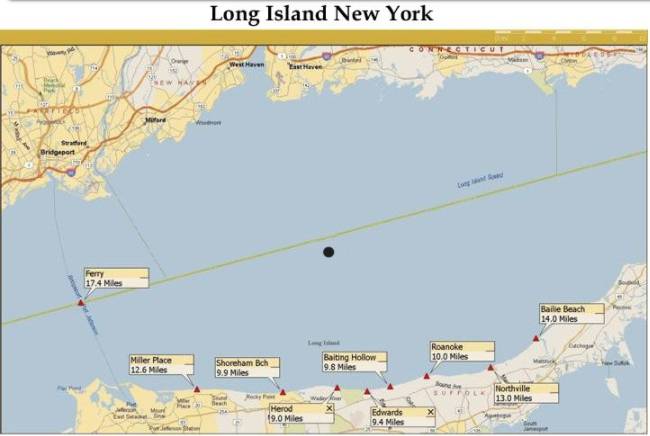A final federal government decision on the still-kicking Broadwater Energy proposal for a liquid natural gas plant in Long Island Sound could come any time now. Meanwhile, the controversy over another proposal for a liquid natural gas facility, on a man-made island south of Long Beach, is heating up. Read more
This website is intended to alert, inform and protect our Long Island communities that are now facing the imminent peril of Liquefied Natural Gas (LNG) proliferation, which would have a disastrous impact on our residential communities if we just sit idly by. Energy companies are currently attempting to build dozens of large dangerous Liquefied Natural Gas (LNG) importation facilities onshore and offshore of some of our coastal communities throughout America, Canada, Europe and Mexico. A facility is planned off of Wading River on the North Shore of Long Island.
Only the construction of nuclear energy plants would be more dangerous for our residential communities.
By building a liquid natural gas (LNG) storage facility in the middle of Long Island Sound, would we be turning a wonderful natural resource and national treasure that hugs the entire Long Island shoreline into an industrial site?
Shell and TransCanada Energy, two of North America’s largest energy companies, have proposed building a 10-story-high, four-football-field-long (about the size of the Queen Mary cruise liner) liquid natural gas storage facility in the middle of LIS.
The proposed facility would be 75 to 100 feet tall. It would be four football fields long and larger than the QE2. It would be anchored 10.5 miles from Cosey Beach Park in East Haven, about 17 miles from the Long Island Sound Ferry, and 18 miles from Hammonasset Beach.

But, as most people know, the Sound is one of the most beautiful and significant bodies of water in the United States. In 1987, after Congress allocated funds for the U.S. Environmental Protection Agency to research, monitor, and assess the water quality of the Sound, it became an Estuary of National Significance. It contains thousands of species of wildlife, and is a vital part of our nation’s environment. And, it provides employment and recreational opportunities for hundreds of thousands of people throughout our region.
Over the past ten years, the federal government, and the states of Connecticut and New York, have spent hundreds of millions of dollars to restore and protect the water quality of this national treasure.
TransCanada and Shell have also made it clear that the natural gas they would import to the factory-like facility they call “Broadwater” will be from sources outside of North America. The proposal for a natural gas storage facility in the middle of Long Island Sound is not environmentally sustainable. A sustainable project would have to incorporate both an aggressive energy efficiency and conservation effort.